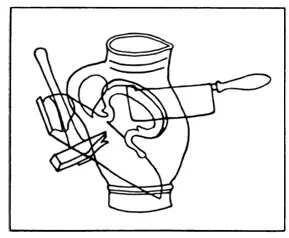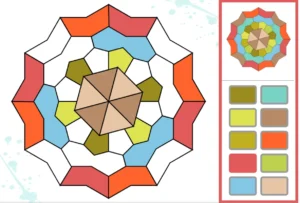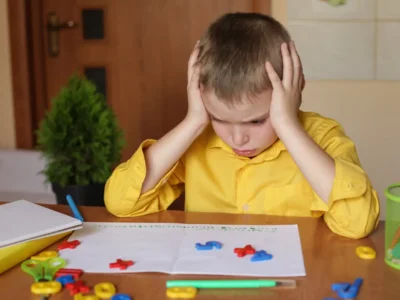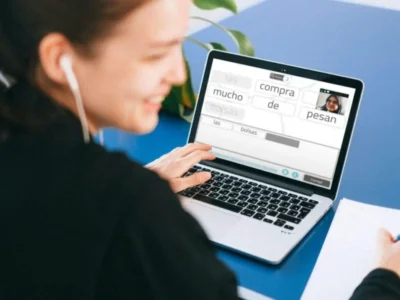In this blog article we will tell you what visual agnosias are and explain their types and how it is possible to see without understanding.
Do you know what visual agnosia? Have you ever found yourself trying to make sense of an image without succeeding, trying to find some resemblance between what you see and some familiar object to be able to give meaning to that image you had never seen before? Perhaps you have experienced this sensation momentarily, when seeing for the first time an MRI image or an ultrasound, or even an abstract painting whose title prompted you to strain to recognize a concrete object in it.
What is visual agnosia?
Visual agnosias are defined as an acquired perceptual disorder due to brain damage, in which the affected person is unable to recognize, through vision, stimuli that they could identify before the injury, despite retaining visual sensation at least partially (there is no blindness) [1] and despite being able to recognize them through other senses, such as touch or hearing.
These people see, but do not understand what they see mainly for two reasons: first because the brain fails to build a coherent global image from the visual features provided by the eyes. And second, because even if it can construct that image (percept), it cannot relate it to anything already known, so no meaning or idea is assigned about what it is or what it might be used for. In the first case, it is called apperceptive visual agnosia and in the second, associative visual agnosia[1,2].
Types of visual agnosia
In apperceptive visual agnosia, when percept construction fails, the person is unable to identify the shape of objects. Thus, they cannot recognize the differences between similar objects, copy their drawing, or mentally reconstruct shapes [1].
In associative visual agnosia, the person perceives shapes correctly, but cannot interpret them. They are able to match similar figures and to copy their drawing, but cannot associate a shape with an object[1]. For example, they cannot relate a rectangle to a book, or a glove to a hand.
In addition, visual agnosia can selectively affect the recognition of different types of stimuli, such as objects (object visual agnosia), colors (chromatic agnosia or achromatognosia), words (agnosic alexia), faces (prosopagnosia) or the integration of the elements of a complex stimulus (simultaneous agnosia or simultanagnosia) [1,3].
Poppelreuter Test
It is a test of supposed figures used in the assessment of visual agnosia. People with apperceptive agnosia will not be able to identify the different figures (for example, by coloring or outlining them). While people with associative agnosia will be able to correctly identify the different figures without recognizing which objects they are.

How is it possible to see without understanding?
The specificity of these disorders is better understood when considering the hierarchical manner in which our nervous system processes images. Visual information is processed both in parallel (the photoreceptors of the retinas simultaneously transmit different types of visual information, such as levels of light intensity, wavelengths or colors…) and in series (from the retinas to the thalamus and from there to the cerebral cortex)[4].
In an early phase of serial processing, features such as the form and structure of the stimulus are processed, in which brain areas are implicated whose lesion can give rise to blindness (called cortical blindness) [2].
In higher-level visual recognition stages, visual features are integrated into a coherent representation of the object. Also, meaning is assigned to the object [2]. Thus, localized brain lesions that affect the higher levels of processing can alter these specific aspects of perception without altering sensory capacity, so the person with agnosia sees the object but cannot interpret it.
On the other hand, the existence of a disorder such as prosopagnosia (agnosia for faces) highlights how important, evolutionarily, face recognition has been for our survival, given that nature has entrusted its processing to a particular part of the brain.
NeuronUP has incorporated exercises to train gnosias with diverse stimuli, including faces.
Bibliography
- Ardila, A. y Roselli, M. (2007). Neuropsicología clínica. México, D. F.: El Manual Moderno.
- Fernández-Guinea, S. (2011). Apraxias y agnosias. En Bruna, O., Roig, T., Puyuelo, M., Junqué, C. y Rueano, A. (Eds.). Rehabilitación neuropsicológica: intervención y práctica clínica (p. 83-108). Barcelona: ElsevierMasson.
- Portellano, J. A. (2010). Introducción a la neuropsicología. Madrid: McGraw Hill.
- Kandel, E. R., Schwartz, J. H., Jessell, T. M., &Agud Aparicio, J. L. (2001). Principios de neurociencia(4a ed., 1a ed. en español.). Madrid: McGraw-Hill.
If you enjoyed this post about visual agnosias, we recommend you take a look at these posts:
“This article has been translated. Link to the original article in Spanish:”
Agnosia visual: tipos y cómo es posible ver sin entender







 The Anterior Cingulate Cortex: Executive Control and Emotional Control
The Anterior Cingulate Cortex: Executive Control and Emotional Control
I’m a Learning Assistance Coordinator at a small high school in Ontario, Canada. I have a student entering grade 9 in the fall that exhibits some very unique challenges. I wonder if it’s agnosia of a type. When she has to copy down what she sees (eg: floor plan, the wall in front of her) she draws them in a flipped (horizontol) fashion.
If the clock and door, in reality, are on the left…she will draw them on the right. Every time. If she needs to draw a floor plan of a familiar place (her bedroom, the classroom), every object is drawn on the opposite side of the room. Any insights for me? Thank you!